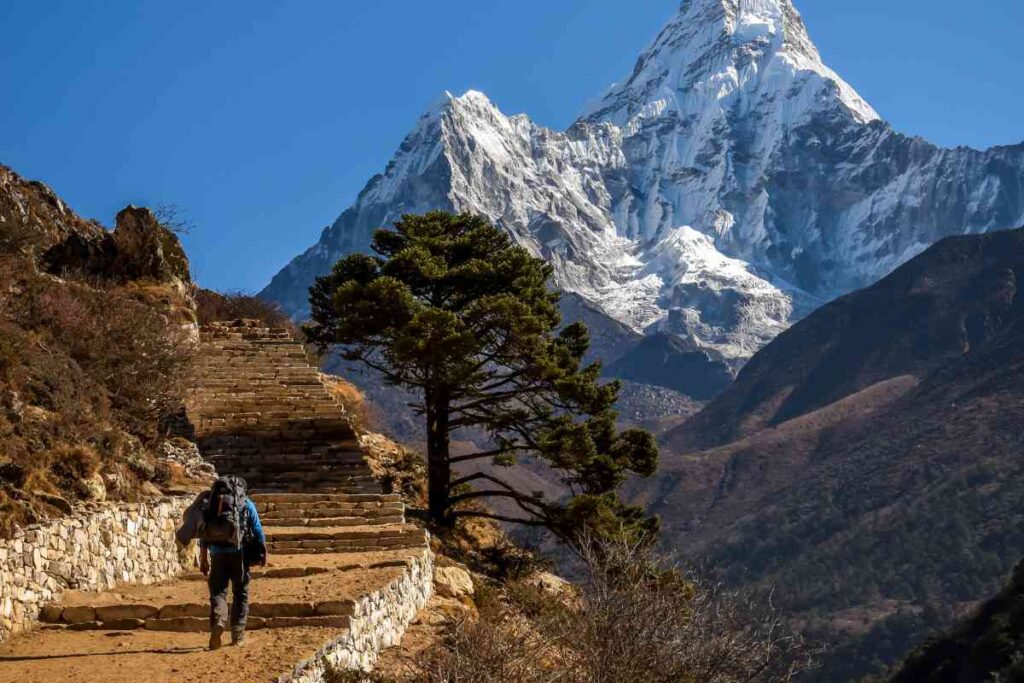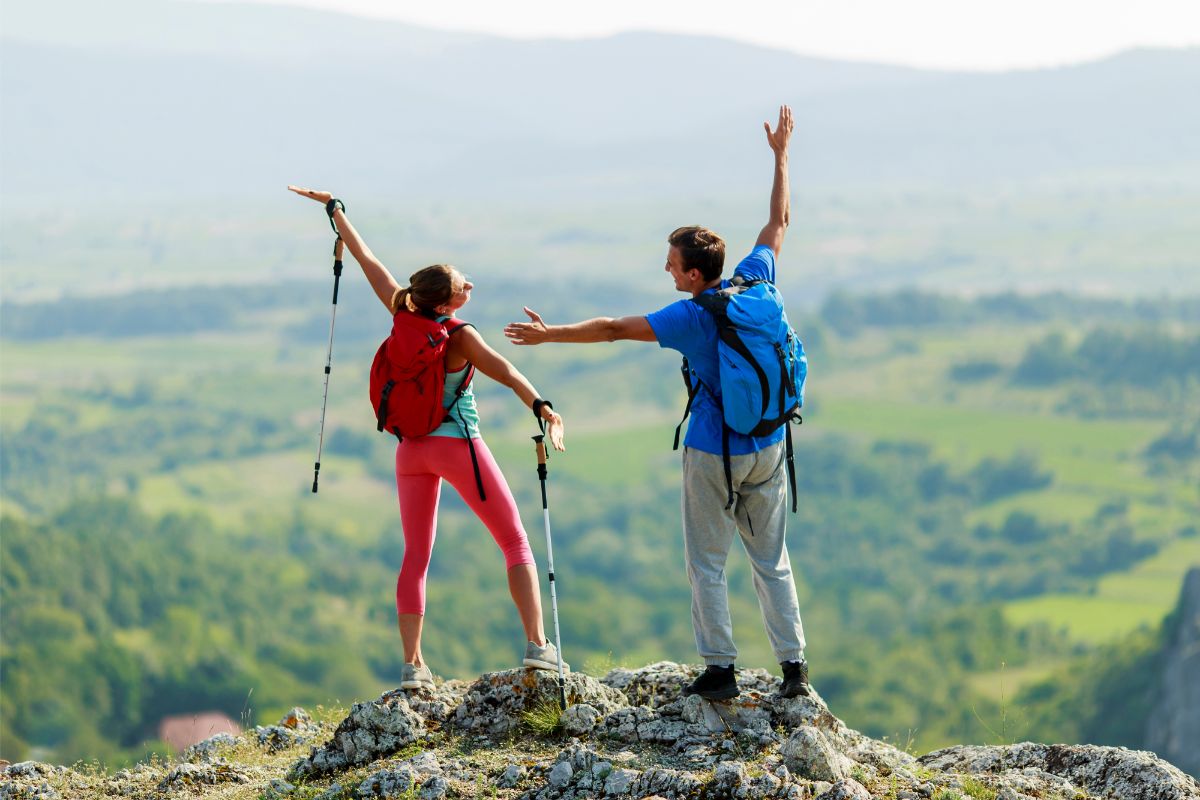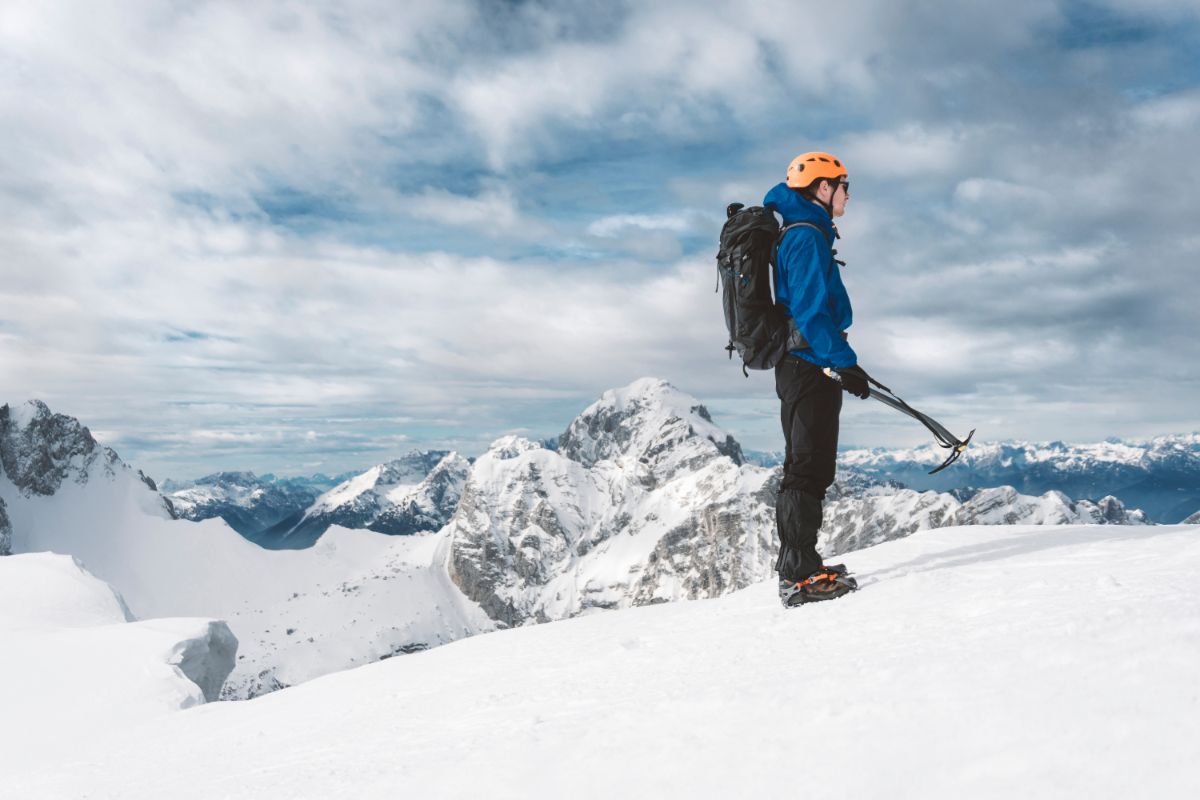Are you looking to take your hiking game to, literally, new heights? Then you’ve come to the right place!
Hiking at high altitudes can be an exhilarating and challenging experience, but it also requires proper preparation and training to ensure a safe and enjoyable journey.
In this article, we’ll cover everything you need to know about training for high-altitude hiking, so keep reading below to learn more!
How To Train For High Altitude Hiking

Physical Preparation
Cardio Training
One of the most important aspects of training for high-altitude hiking is cardio training. Why is cardio so crucial, you may ask?
Well, when you’re hiking at a high altitude, the air is thinner, which means there is less oxygen available for your body.
Read next – Is hiking good cardio?
This can make it harder to breathe, and you may find yourself getting winded more easily. That’s where cardio training comes in; it helps to improve your body’s ability to use oxygen more efficiently, so you can breathe more easily at higher altitudes.
Read next – How to Train for Hiking Without Hiking
Recommended Cardio Exercises
So, what are some good cardio exercises to include in your training regimen? Running, cycling, and swimming are all great options, as they all require sustained aerobic activity.
Learn More – Is Hiking Aerobic or Anaerobic?
Hiking is also a great way to train, as it helps to simulate the conditions you’ll experience on your high-altitude hike.
When doing cardio training, it’s important to gradually increase the intensity and duration of your workouts over time, to avoid injury and build endurance.
Remember, high-altitude hiking can be a physically demanding activity, so it’s important to train your body properly to ensure a safe and enjoyable experience.
Strength Training
Let’s move on to another important aspect of physical preparation for high-altitude hiking; strength training!
While cardio training helps to improve your body’s ability to use oxygen, strength training helps to build the muscles you’ll need to power through those steep inclines and uneven terrain. Plus, having stronger muscles can help to reduce the risk of injury and fatigue on your hike.
Recommended Strength Exercises
So, what are some good strength exercises to include in your training regimen? Squats, lunges, and step-ups are great exercises for building lower body strength, which will come in handy when hiking uphill.
Core exercises like planks and Russian twists are also important, as a strong core can help with balance and stability on uneven terrain.

Upper body exercises like push-ups and pull-ups can also be helpful, as you’ll likely be carrying a backpack with supplies on your hike. However, make sure to incorporate rest days into your training schedule to allow your muscles to recover.
Flexibility Training
Alright, we’ve covered cardio and strength training – now it’s time to talk about flexibility training! While it may not seem like the most obvious aspect of training for high-altitude hiking, having good flexibility can actually make a big difference in your overall performance and comfort on the trail.
Having good flexibility can help to improve your range of motion and joint mobility, which can make it easier to navigate those rocky paths and steep inclines.
Plus, stretching can help to reduce the risk of injury and muscle soreness, which can be especially important when you’re hiking at high altitudes.
Recommended Flexibility Exercises
So, what are some good flexibility exercises to include in your training regimen? Yoga is a great way to improve flexibility, as it combines stretching with strength-building and relaxation.
You can also do specific stretches for the muscles you’ll be using most on your hike, like your calves, quads, and hips. Foam rolling is another great way to improve flexibility and reduce muscle tension.
When doing flexibility training, it’s important to listen to your body and not push yourself too far beyond your limits. Remember, the goal is to improve your flexibility and reduce the risk of injury – not to strain your muscles.
Mental Preparation
When it comes to high-altitude hiking, having the right mindset can make a big difference in your overall experience, so it’s also important to be mentally prepared for the challenges you may face on the trail, from altitude sickness to fatigue and discomfort.
Visualization techniques can be helpful, as they allow you to mentally rehearse the challenges you may face on your hike and envision yourself succeeding.
Goal setting is another great strategy, as it gives you something to strive for and helps you stay motivated.
Meditation and mindfulness practices can also be helpful for staying focused and calm on the trail. And, of course, positive self-talk can go a long way in boosting your confidence and motivation.
Nutrition And Hydration
Proper fueling and hydration are essential for maintaining energy levels, preventing altitude sickness, and avoiding dehydration on the trail. So, make sure to drink plenty of water and electrolyte-rich fluids throughout your hike.
A balanced diet with plenty of carbohydrates, protein, and healthy fats can also help to fuel your body and prevent muscle fatigue while snacking throughout the day can also help to maintain energy levels and prevent hunger.
Finally, consider bringing along electrolyte replacement supplements or sports drinks to replenish vital minerals and salts lost through sweating.
Equipment And Gear
Last but not least, having the right equipment and gear is crucial for both safety and comfort. Hiking boots with good ankle support and traction are a must, as they’ll help prevent slips and falls on rocky or uneven terrain.
Layered clothing is also important, as temperatures can vary greatly at high altitudes. Sun protection is key as well, so be sure to bring along a hat and sunscreen. Finally, trekking poles can help you maintain balance and reduce strain on your knees and ankles.
Find out 🚶 How to Strengthen Knees for Hiking?
The Bottom Line
Training for high-altitude hiking requires a holistic approach that encompasses physical, mental, and nutritional preparation, as well as having the right equipment and gear.
By following the recommended strategies outlined in this article, you’ll be well on your way to a successful and enjoyable high-altitude hiking experience. Just remember to always prioritize safety, listen to your body, and have fun on the trail!






